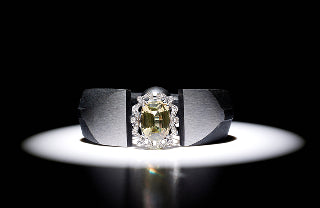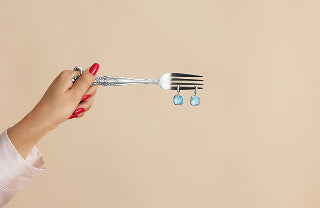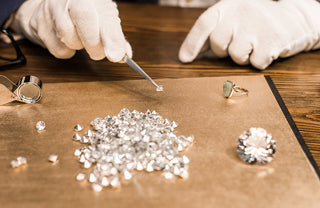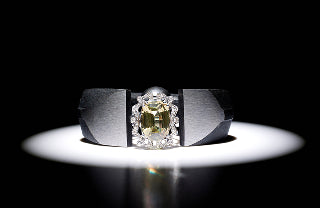
The Journey of Diamonds
Share
PART I
History of Diamonds1
The Diamond Industry4
Kimberley Process Certification Scheme5
Genesis and properties of Diamonds…………………………………………………………………………….…..……7
PART II
Anatomy of a Diamond……………………………………………………………………………………….….…..……7
Structure of a Diamond5
Color6
Clarity6
Cut6
Carat6
Standard diamond shapes6
Part III
Natural Fancy Color Diamonds…………………………………………..……………………………….….…..……7
Color:Hue/Tone/Saturation/Distribution6
Coloration in Diamonds6
Fancy Color Diamond Grading6
Part I
History of Diamonds
Diamonds are the most prized and highly values of gemstones. Throughout history they have been admired by royalty and worn as a symbol of strength, courage and invincibility. Over the centuries the diamond acquired unique status as *the ultimate gift of love, in myth and reality. It is the hardest known substance yet has the simplest chemical composition, consisting of crystallized carbon, the chemical element that is fundamental to all life. Diamonds come in many colors and their optical properties are stunning. They disperse/refract light into the colors of the rainbow, and sparkle far more than any other gemstone.
*In the 1940s, the De Beers diamond company launched a marketing campaign with the slogan "A Diamond is Forever," which emphasized the idea that diamonds were a timeless symbol of love and commitment. The campaign was wildly successful, and it cemented the idea that a diamond engagement ring was an essential part of any proposal.
First mined in India over 4000 years ago, diamonds were used to decorate religious objects, serve as talisman against evil and a protector in battle. Buddhists also recognized the deep symbolic significance accorded to diamonds in ancient Buddhist scriptures, including the *“ Diamond Sutra” which states that truth is eternal, just like diamonds. Diamonds are also found in the culture and mysticism of Hinduism, Jainism and Tibetan Lamaism. The Sanscrit word ‘vajra’ – meaning both thunderbolt and diamond – was the name for a small metal weapon having the symbolic nature both of a diamond (able to cut any substance but not be cut itself) and the thunderbolt(irrepressible force).
*The Diamond Sutra is one of the most important Buddhist texts, and it is considered to be one of the earliest printed books in the world. The sutra is a collection of teachings given by the Buddha to his disciple Subhuti, and it emphasizes the concept of emptiness and the impermanence of all phenomena.
In ancient times, India was the world’s only source of diamonds until the beginning of the 18th century, except the minor deposit found in Kalimantan, Borneo. Today the most prized historical diamonds are still known as the *diamonds of Golconda, a region located between the lower reaches of the Godavari and Krishna rivers
*Historically, the Golconda region was known for producing large and high-quality diamonds, including the Koh-i-Noor, the Hope Diamond, and the Regent Diamond. These diamonds were highly prized by royalty and nobility throughout the world, and they played a significant role in the development of the diamond trade and the rise of the global diamond industry.
The Diamonds of Golconda are prized for their unique characteristics, which are a result of the geological conditions in the region. The diamonds are typically colorless or near-colorless, with a high degree of transparency and a distinctive sparkle that is known as "the Golconda effect." This effect is caused by the high degree of purity and crystalline structure of the diamonds, which allows them to reflect light in a unique way.
Ancient Greeks belived diamonds to be “tears of the gods” and splinters of falling stars. The word “diamond” is derived from the Greek word “adamas”, meaning invincible, indestructible and later translated into Latin as “diamas”.
The early diamond trading capital was Venice, where polishing a diamond’s facets began in the 1330s. For centuries, Indian diamonds reached first Rome and later Venice by 2 routes, known collectively as the fabled Silk Route.
By the late 14th century the art of diamond polishing has spread to Bruges and Paris and later, in the 15th century, Antwerp became the new flourishing diamond center, supplied with rough stones through Lisbon as well as Venice.
At the beginning of the 20th century South Africa has established itself as the world’s top diamond producing country, followed by other countries within the African continent and beyond.









